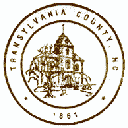Are Bananas Good for You? Ask NC Cooperative Extension
go.ncsu.edu/readext?968277
en Español / em Português
El inglés es el idioma de control de esta página. En la medida en que haya algún conflicto entre la traducción al inglés y la traducción, el inglés prevalece.
Al hacer clic en el enlace de traducción se activa un servicio de traducción gratuito para convertir la página al español. Al igual que con cualquier traducción por Internet, la conversión no es sensible al contexto y puede que no traduzca el texto en su significado original. NC State Extension no garantiza la exactitud del texto traducido. Por favor, tenga en cuenta que algunas aplicaciones y/o servicios pueden no funcionar como se espera cuando se traducen.
Português
Inglês é o idioma de controle desta página. Na medida que haja algum conflito entre o texto original em Inglês e a tradução, o Inglês prevalece.
Ao clicar no link de tradução, um serviço gratuito de tradução será ativado para converter a página para o Português. Como em qualquer tradução pela internet, a conversão não é sensivel ao contexto e pode não ocorrer a tradução para o significado orginal. O serviço de Extensão da Carolina do Norte (NC State Extension) não garante a exatidão do texto traduzido. Por favor, observe que algumas funções ou serviços podem não funcionar como esperado após a tradução.
English
English is the controlling language of this page. To the extent there is any conflict between the English text and the translation, English controls.
Clicking on the translation link activates a free translation service to convert the page to Spanish. As with any Internet translation, the conversion is not context-sensitive and may not translate the text to its original meaning. NC State Extension does not guarantee the accuracy of the translated text. Please note that some applications and/or services may not function as expected when translated.
Collapse ▲Question: I was told that bananas are a junk food and that they are bad for my blood sugar and I should never eat them. I used to eat a banana with my cereal in the morning. Now I am trying to eat just the cereal and milk. Are bananas really that high in sugar? What other options are there for adding fruit to my cereal?
Answer: Yes, bananas are quite high in sugar. But that alone is not a reason to cut the out of your diet completely, especially if bananas are a fruit you enjoy. A serving of a banana is considered ½ banana or a small 4-in-long piece. One serving of half a banana is approximately 15 grams of carbohydrates and 60 calories. Considering the recommendations for blood glucose control are 45-60 grams of carbohydrates per meal, a whole banana might very well meet half of someone’s carbohydrate budget. Add that banana to 2 cups of cereal plus milk, which are all carbohydrates, and you will most likely exceed your carbohydrates per meal and elevate your blood sugar.
So how do you enjoy your banana and cereal? I can provide multiple examples of how to balance blood sugar and enjoy your carbohydrates too. Keep your carbohydrates around 60 grams and add some protein to slow overall digestion. Consider the following examples:
- 1 Banana (30g carbs), Cereal (30g carbs worth) + ½ cup Almond milk (<5g carbs) + 1-2 ounces of chopped nuts of choice.
- 1 ¼ Cup Strawberries (15g carbs), Cereal (45g carbs worth) + ½ cup Almond Milk (<5g carbs) + 1 boiled egg.
- ¾ cup blueberries (15g carbs), Cereal (45g carbs worth) + ½ cup cows’ milk (<6g carbs) + 2 links turkey sausage.
If you need clarification on the above, I am only ever a call or email away at (828-884-3109) or Erin_Massey@ncsu.edu .
As I said before, there are many reasons to keep bananas as part of your diet, especially if you enjoy them. Bananas are one of the few foods that have been shown to benefit the microbiota, or organisms that live in our intestinal tract. You may have heard the term “pre-biotics.” Prebiotics are the food that these intestinal organisms ferment or eat to survive. Prebiotic foods are fibers, but not all fibers are prebiotics that provide a health benefit to the gut microbiota. There are only 3 groups of fiber currently considered prebiotics; fructo- oligosaccharides, galacto-oligosaccharides, and inulin. Bananas belong to the fructo-oligosaccharide group as does chicory, garlic, asparagus, onion and artichoke. Bananas are also slow down transit time in the gastro-intestinal tract and help with diarrhea. Enjoy bananas, just in the right amount.
- Reimer, Raylene. Prebiotics and Gut Microbiota: Establishing a Healthy Trajectory form Early Life to Adulthood. Beneo Institute. 15 May 2023. Webinar
- Evert A, Chomko M, Cox, C, Harringon C, et al. Choose Your Foods: Food list for Diabetes. American Diabetes Association & Academy of Nutrition and Dietetics. 2019.
Erin Massey in Transylvania Counties’ Family and Consumer Science Agent (FCS) as well as a Registered Dietitian Nutritionist. Erin provides families and community members with workshops, classes, and demonstrations related to food and nutrition. Erin’s expertise ranges from food safety and cooking skills to specific dietary restriction and disease specific nutritional needs.
Have a nutrition or other food-related question? Ask Erin at 828.884.3109




